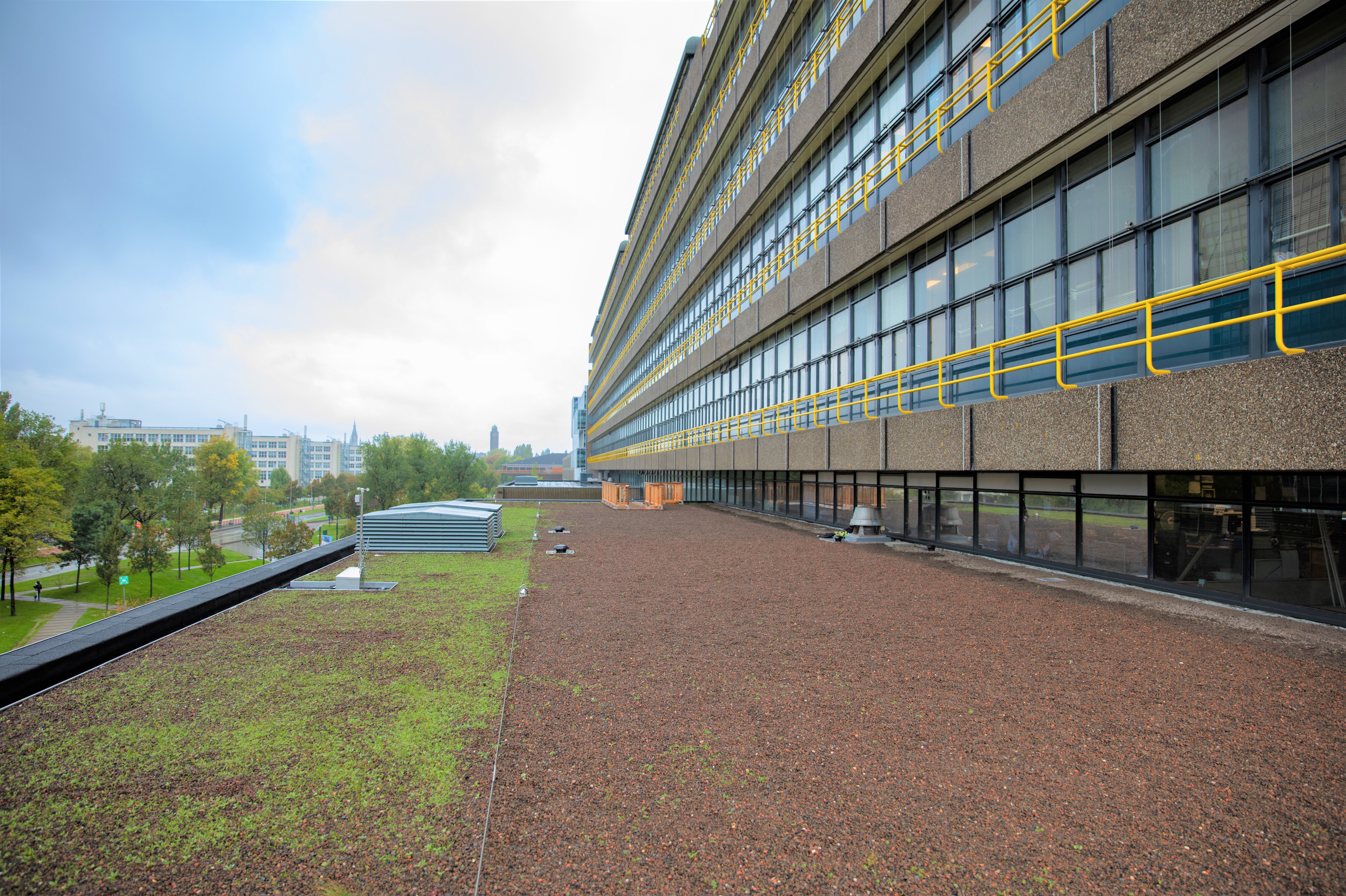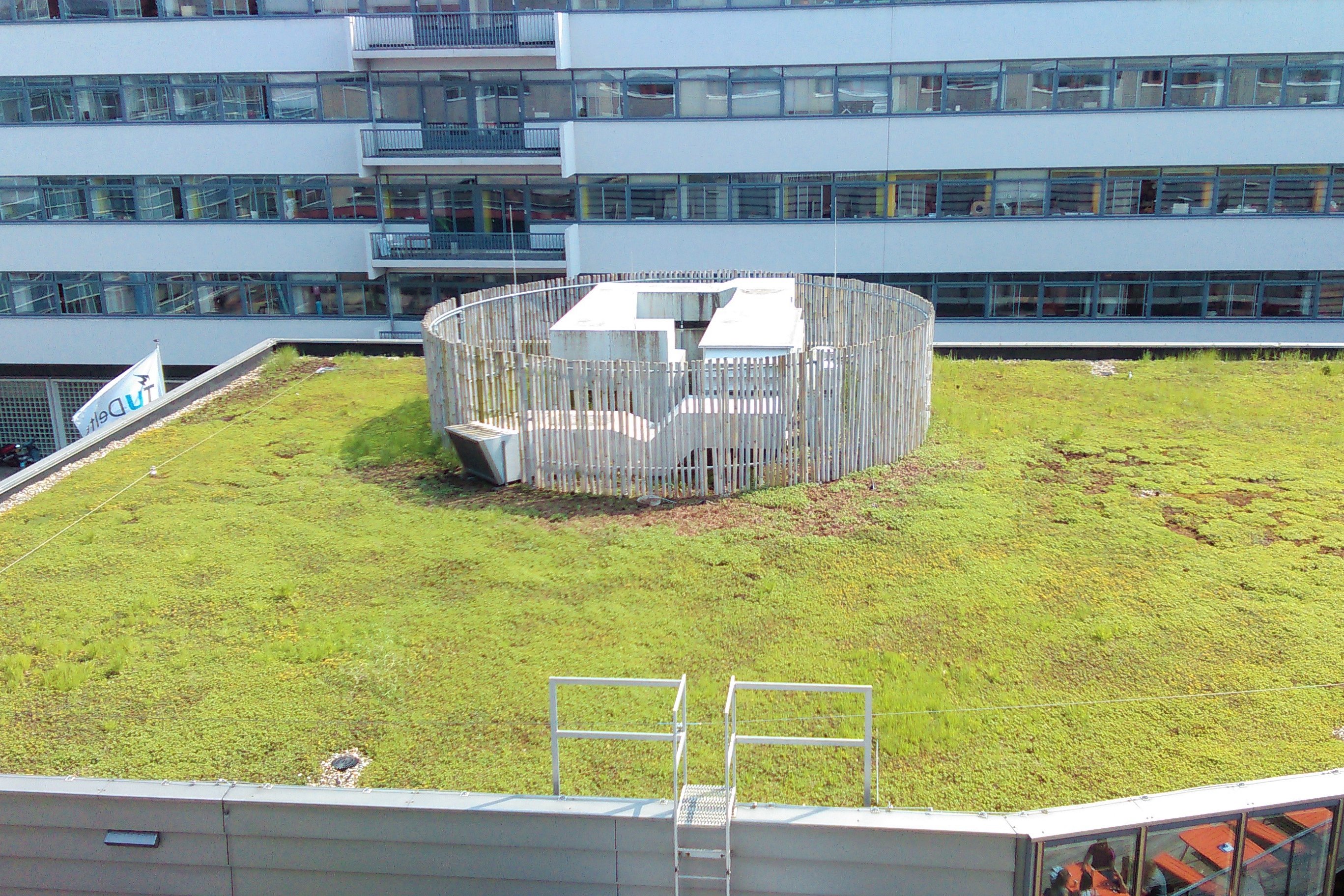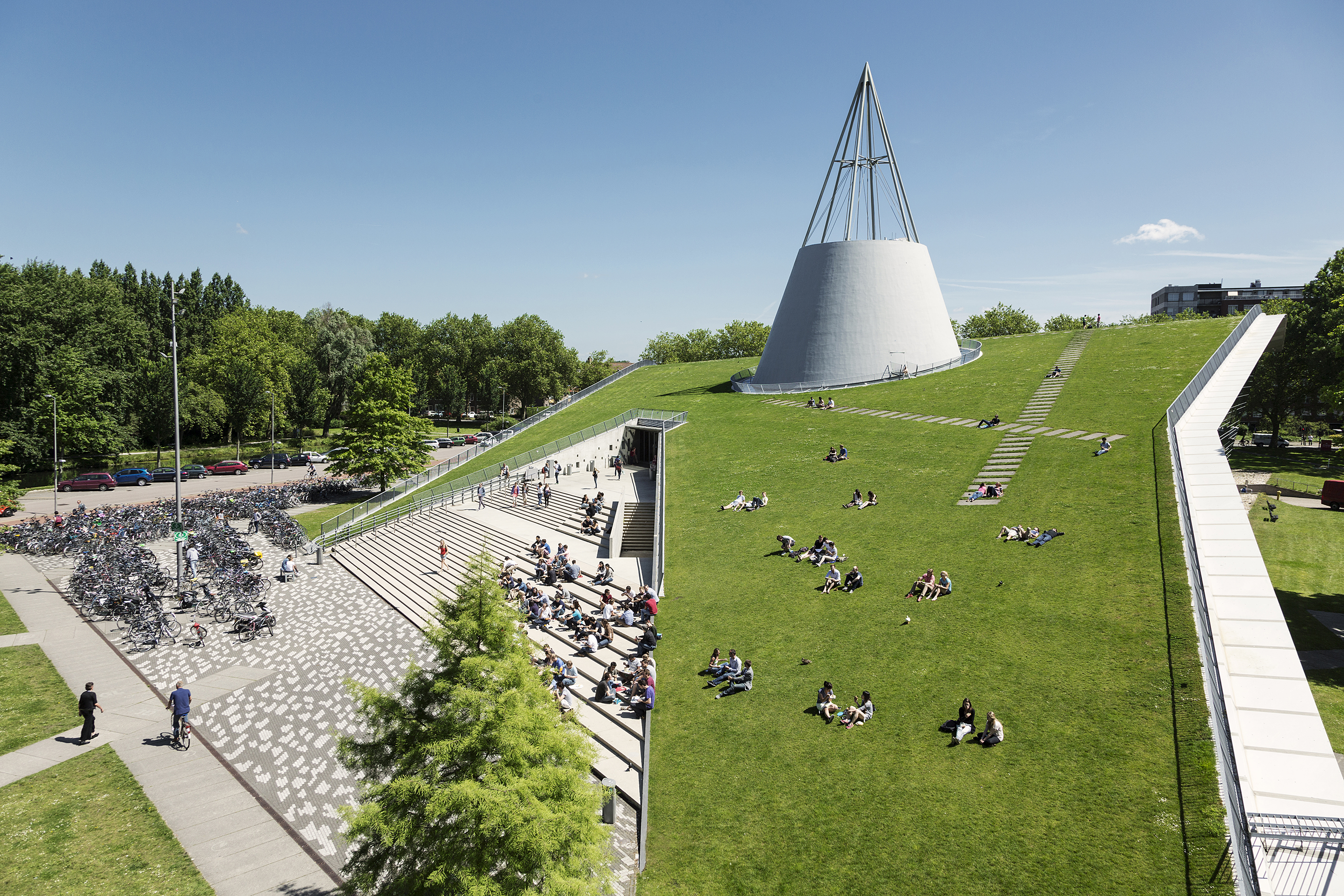A roof that changes colour with the season
Flat roofs at TU Delft cover a total of more than 170,000 m2, 13,300 m2 of which are covered in sedum, grass, or a mix of the two.
Green roofs have numerous benefits. They provide good isolation; cooling in the summer and retaining heat in the winter. That helps to cut energy bills – by an estimated 5%, dependent on the type and thickness of cover. In addition to this economic benefit, a green roof also looks attractive. Sedum changes colour with the seasons. And a grassed roof or rooftop garden can be used for relaxation, recreation or studying in the open air, such as the grassed roof of the TU Delft Library. Of course, these social effects are more difficult to gauge than the energy savings.


Overview of buildings with natural roof covering
Building | New or existing building | m2 | Since | Type of covering |
TU Delft Library | Existing building | 5,500 | 2009 | Grass |
Faculty of Technology, Policy and Management (building 31) | Existing building | 1,400 | 700 m2 since 2002 and 700 m2 since 2016 | Mix of sedum and different types of grass |
Applied Sciences (building 22) | Existing building | 600 | 2010 | Sedum |
Aerospace Engineering (building 61) | Existing building | 2,000 | 2017 | Mix of sedum and different types of grass |
Civil Engineering (building 23) | Existing building | 1,400 (2x700) | 2018 | |
ME (building 34) | Existing building | 1900 | 2018 | Sedum and various types of grass |
Applied Sciences South (building 58) | New construction work | 500 | 2016 | Various grasses and trees (in pots) |
Total |
| 13,300 |
|
|

